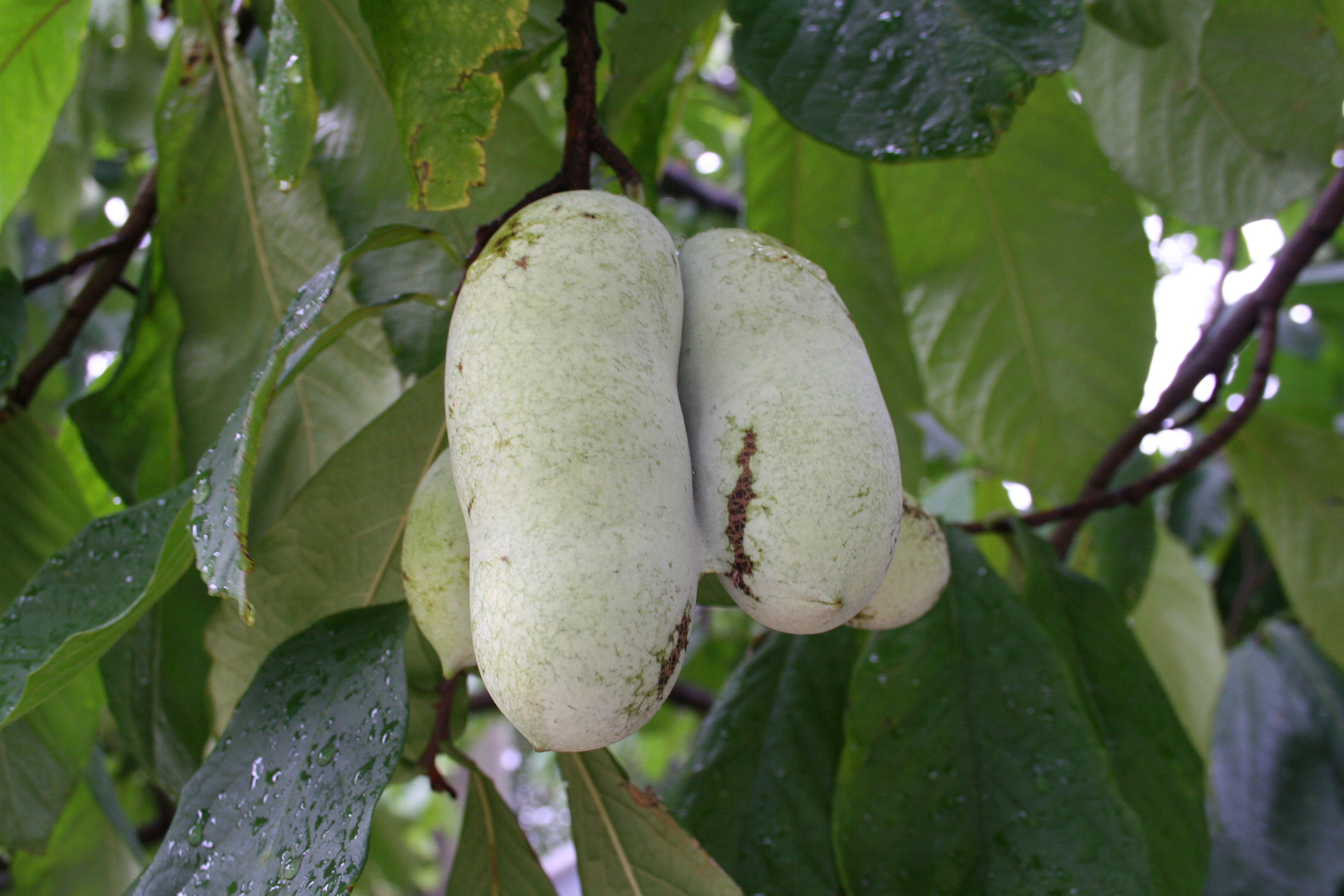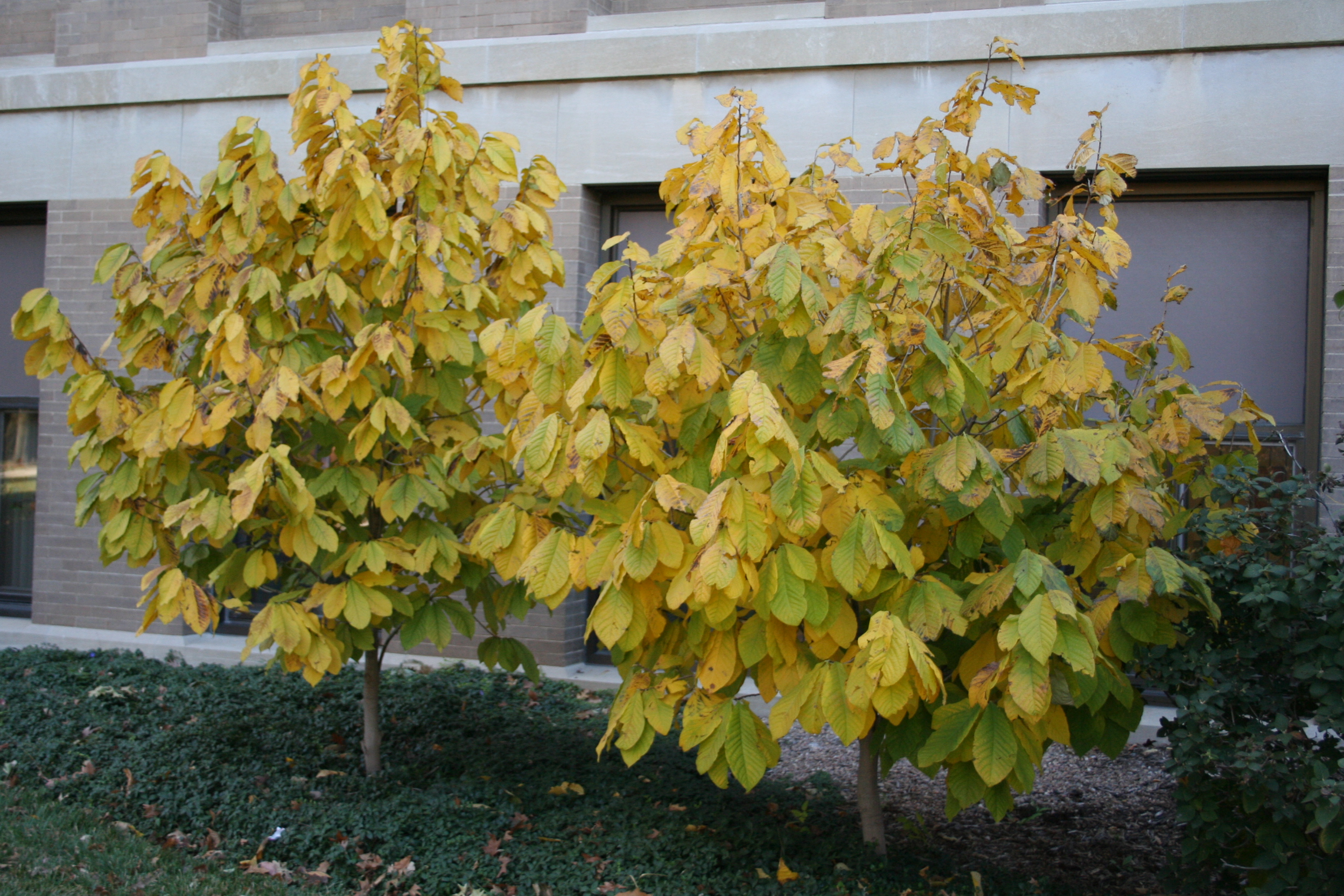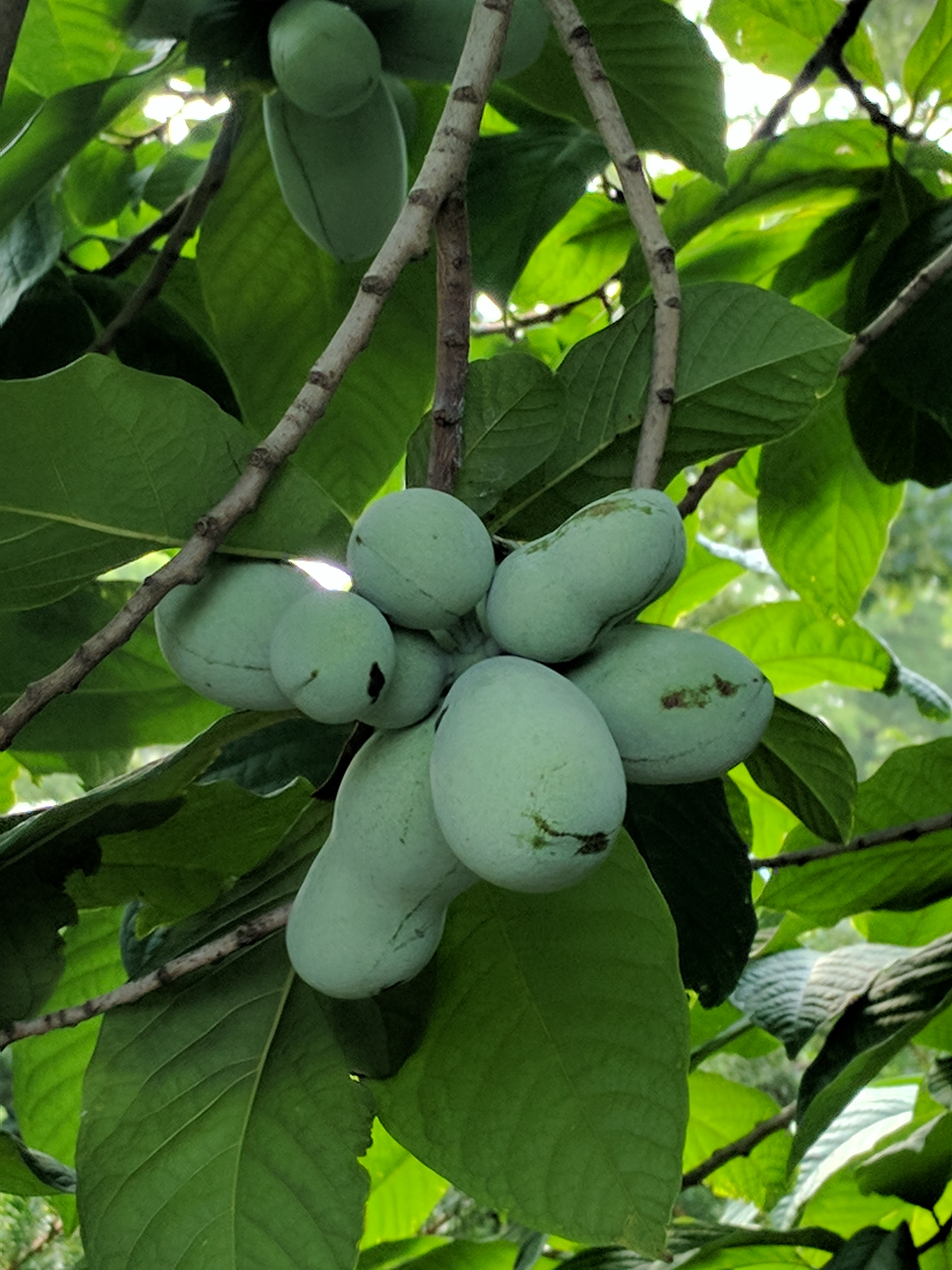Pawpaw
Asimina triloba, Deciduous
Pawpaw is a forest understory tree native to much of the eastern US, reaching its western limit in the oak-hickory forests of southeast Nebraska. It is best known for its large, edible, yellow-green fruits with custard-like pulp. It’s occasionally used as a landscape tree in southeast Nebraska.

Where To Grow
Prefers moist, organic well-drained soil in full sun to part shade. Pawpaw is shade tolerant and would prefer some afternoon shade from other trees or perhaps the shade of a building. Spreads by root suckers to form colonies, so give it room to spread.

Tree Characteristics
Pawpaw is a small, leggy understory tree which typically grows 15-20' tall (sometimes to 30') and in Nebraska occurs with the oak-hickory forest in low areas, ravines and along streams. Typically spreads by root suckers to form colonies of leggy stems with an umbrella-like leaf canopy high on the trunks. The large, slightly drooping, elliptical, medium green leaves (6-12" long) are tropical looking and retain green color well into fall before turning yellow. The cup-shaped flowers with distinctive eggplant purple petals appear in spring. These give way to edible, oblong, yellowish green fruits which mature in early autumn, falling to the ground as they ripen. The flavor is sweet and very unique and the consistency is custard-like.
Wildlife Benefits
Wildlife (e.g., raccoons, squirrels and opossums) eagerly seek out the fruits and often beat humans to the harvest.
Utilization
Pawpaw Cookies with Black Walnuts
3/4 c. pureed pawpaw pulp
1 c. all-purpose flour
1/2 tsp. baking powder
1/4 c. butter
1/2 c. brown sugar
1 egg
1/2 c. black walnuts
Preheat the oven to 350°F and grease one large cookie sheet. Peel and seed fresh pawpaws and process in a food processor until fine. Sift together the flour and baking powder, and set aside. Cream the butter and sugar. Add the egg. Add the flour mixture and then add the pawpaw pulp. Chop half the nuts (reserve 16 pieces) and blend them in. Drop by teaspoonfuls onto the prepared cookie sheet and press a piece of black walnut onto the top of each cookie. Bake 12 minutes or until brown across the top. Makes about 16 cookies.
Additional Considerations
Pawpaw can be grown in full sun but prefers afternoon shade. It will form a colony/thicket over time with individual trunks lasting from 5 to 10 years or so. It has no serious insect or disease problems but needs consistent moisture.
Interesting Facts
The pulp of the fruit is somewhat like a banana which gives rise to common names like the Indiana banana. The fruits are eaten raw or can be used in ice creams, pies or baked goods. The fruits spoil quickly after ripening and they can cause intestinal distress when consumed too early or too late. Early Americans made a yellow dye from the pulp of the ripened fruit. The common name likely derives from the Spanish papaya for its similar leaves and fruits. The genus name Asimina is adapted from the Native American name “assimin”. The species name triloba refers to the flowers' three-lobed petals that resemble a tricorne hat. The larvae of the zebra swallowtail butterflies feed on pawpaw leaves, chemicals of which confer protection to them throughout their lives.


